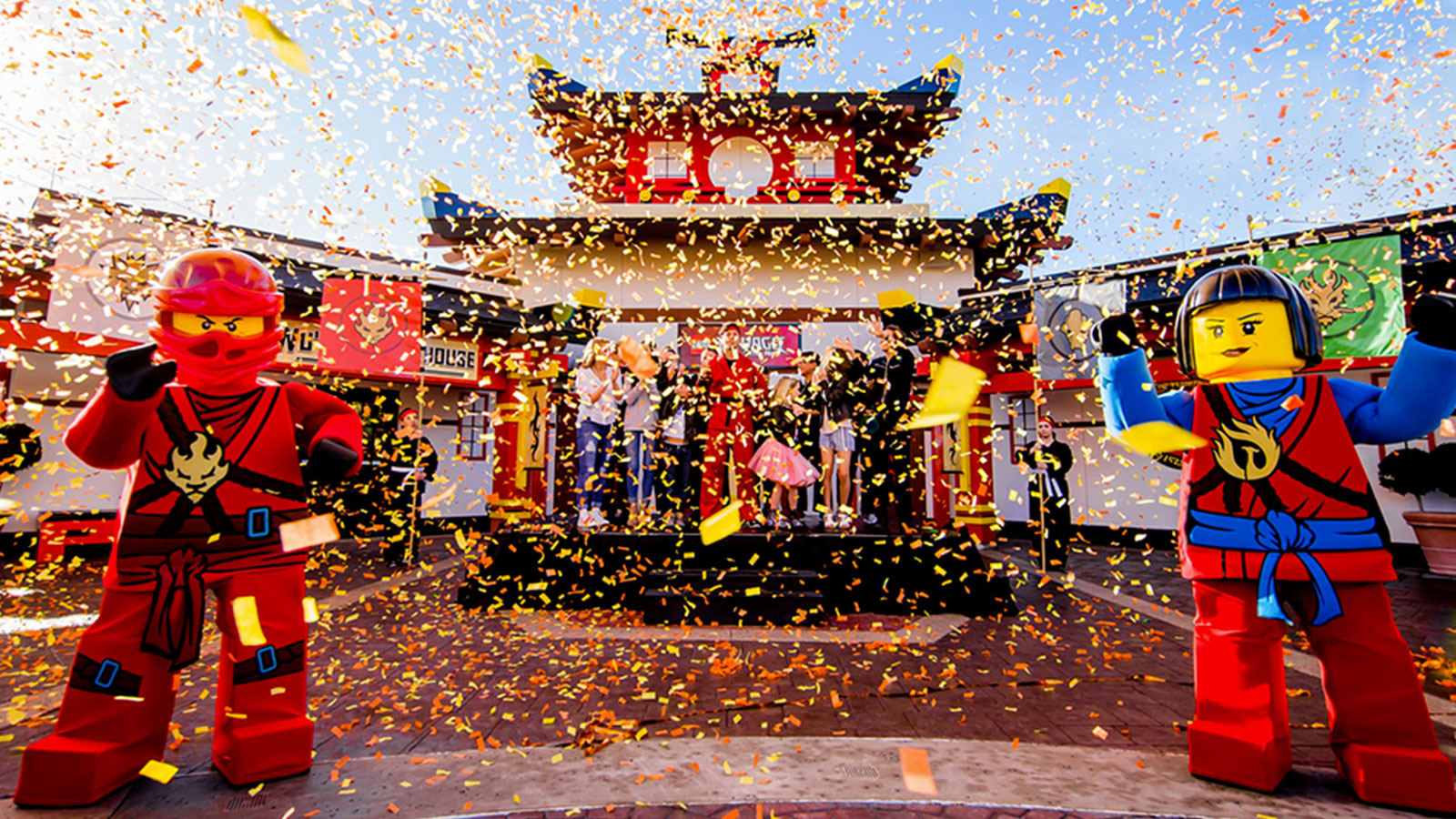LEGO Ninjago Ride with Triotech & Hand Tracking
Posted; August 26, 2020
In the interactive LEGO® Ninjago® dark ride, using a weapon-like device (such as a gun or blaster) was out of the question for family-friendly theme park operator Legoland Parks/Merlin Entertainments. Powered by Ultraleap hand tracking, ride developers Triotech solved the challenge by doing away with controllers altogether. Along the way, they also deepened guests’ immersion in the world of Ninjago, and reduced wear and tear to near-zero levels.
Background
Aimed at children aged between four and ten, the successful Lego Ninjago franchise is based on the adventures of a group of apprentice ninjas. Introduced in 2011, it has been running continuously ever since. To date there have been 11 TV series, over 250 Lego sets, and a movie grossing over $120 million worldwide.
Triotech designs, develops, and manufactures multi-sensory, interactive attractions and rides for the leisure and entertainment industry. There are over 415 Triotech attractions in 65 countries worldwide. Around 25 million people experience a Triotech attraction each year.
Merlin Entertainments approached Triotech to develop an interactive Ninjago ride for Legoland Parks around the world. However, there was a challenge. Although guests needed to be able to interact with the story, Legoland is a family-friendly attraction. This meant guns, blasters, or weapons of any sort were out of the question.
Gesture control and tracking
Triotech met the challenge by using Ultraleap’s tracking technology to power an innovative gesture control system. The Ninjago ride was the first interactive attraction in the world that guests could interact with using only their hands, with no controllers or devices needed.
Ultraleap combines the world’s most advanced hand tracking with mid-air haptics, a "virtual touch" technology that creates the sensation of touch in mid-air. No wearables or peripherals are required: users can interact in VR using only their hands.
Leap Motion Controllers are embedded directly in the ride’s cars to track guests’ hand movements. The guests are apprentice ninjas, and software translates their ninja hand moves into projections on the screen, enabling them to “throw” fireballs, blast lightning, and more.
Using Ultraleap’s tracking not only got rid of what Merlin Entertainments didn’t want – a hand-held weapon-type device – but also actively added to the immersive storytelling. In the original Ninjago TV show, the apprentice ninjas learn to master the elemental powers. So, for guests to be able to interact directly with these fitted perfectly with the story.
Not only that, but the target audience – children and young teens – found gesture interaction natural and intuitive, picking it up very quickly. And in a post-pandemic world, being able to interact without touching a surface has obvious appeal for theme park guests.

Six gesture-controlled LEGO Ninjago rides – and counting
To date, Triotech have installed no fewer than six versions of the ride at Legoland parks around the world (including Legoland California, Legoland Florida and Legoland Windsor), with a seventh currently being installed. The ride won European Star Awards in the Best New Rides category in 2017 and in the Best Dark Rides category in 2018.
Triotech’s clients were impressed with the ride from an operational as well as creative perspective. “Our clients like it because they don’t have to replace a device that fell on the floor that broke a trigger or something like that,” says Christian. “There’s no wear and tear.”
Triotech have subsequently gone on to use Leap Motion Controllers to power their new gesture-controlled Storm VR ride, an interactive multiplayer VR coin-op simulator ride targeted at family entertainment centres (FECs).